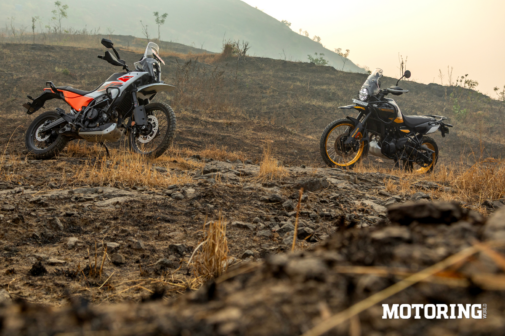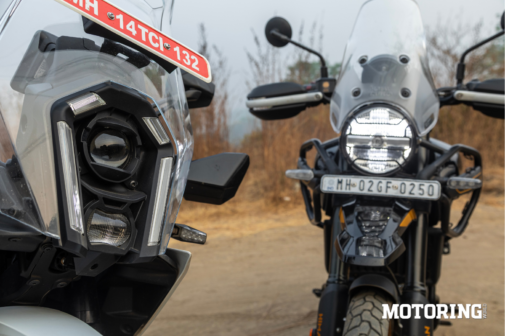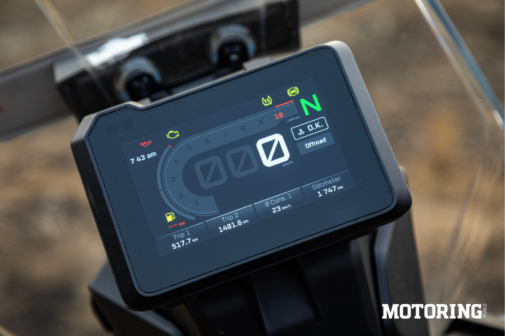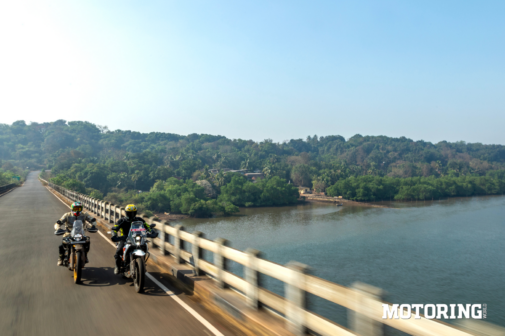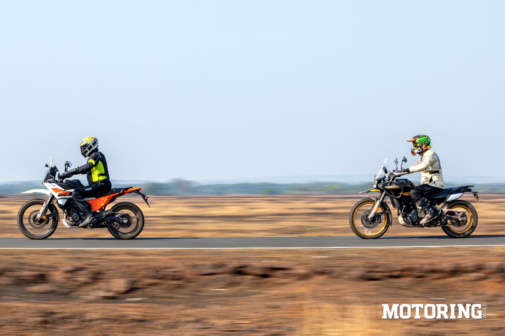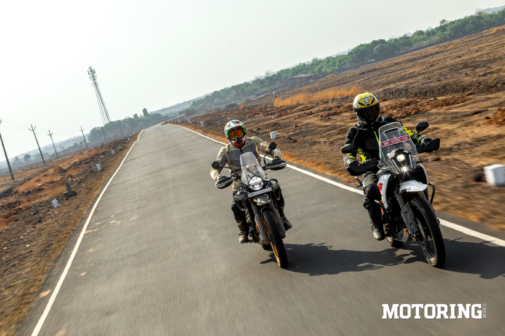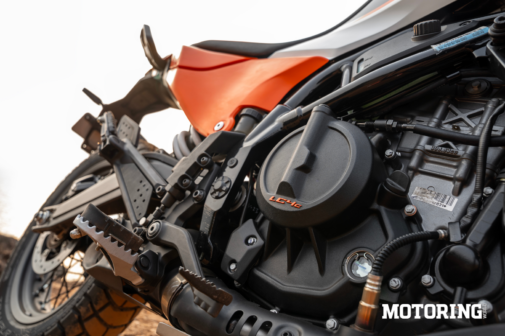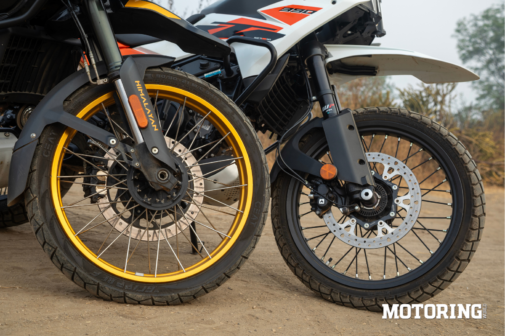We at Motoring World are a curious bunch, and our curiosity has always led us to great stories and adventures. One of the questions that often keeps us up at night is this: what is the perfect motorcycle for our Mumbai–Goa–Mumbai ‘work trips’? Of all the motorcycles I’ve ridden down to the Sunshine State, the Royal Enfield Himalayan stood out — with its comfortable seat, adequate performance, and brilliant ride quality. But after spending some time with the new KTM 390 Adventure in Goa, I knew the answer might not be so simple anymore.
But the plan was simple enough: three days, two bikes, one familiar route. And since I had comparatively less saddle time on the KTM, it made sense to start with it. That also meant I didn’t have to look at that stacked LED headlight while riding. Though I’ve always appreciated KTMs for their polarising looks, this particular headlight felt like a forced attempt to stay in sync with the new design language. But apart from that, the 390 Adventure looked every bit the proper KTM ADV — tall, purpose-built, and of course, orange.
The Himalayan never had this issue. Royal Enfield took the unique elements from the old Himalayan 411 and evolved them for the new bike… and it worked, didn’t it? It looks familiar, yet new. Oh, and the one we had looked slightly different — but that’s because my curiosity (and a series of unplanned events) led me to end up with the Raid kit for an indefinite period. But more on that later.
Riding through Goa on the 390 Adventure felt… different. Almost out of character. Crawling through traffic in third gear, with no throttle input — which KTM before this one could do that? I was so amused and immersed in experiencing the new low-speed assist feature that I barely noticed how easily I was gliding over broken roads.
As the traffic thinned and we merged onto NH66, it was time to stretch the 390’s legs. As friendly and docile as it felt under 4000 rpm, it transformed into a typical rev-happy maniac once you twisted the throttle past that. In a matter of seconds, I was effortlessly cruising at triple-digit speeds. Surprisingly, even with my off-road helmet, there was barely any buffeting, even well beyond the speed limits.
After about 100 km, there wasn’t any real sign of fatigue. That was also down to the ergonomics — the handlebar was tall and wide, the seat was flat and roomy, and the footpegs… well, the slightly rear-set position felt fine until about 150 km. After that, I found myself occasionally stretching my legs, pushing on until I couldn’t anymore. I was already falling for the 390 Adventure, but it felt like the right time to switch back to the Himalayan.
Almost instantly, my legs were at ease. Thanks to the tall seat height, there was more room for my lower body, and I found myself sitting ‘on’ the bike rather than ‘in’ it — a subtle difference that gave me better control. The trade-off? The seat itself. It was narrow and far too firm, though the ‘Rally’ sticker on the side made the kit’s intentions pretty clear. Still, if my derriere’s memory serves me right (and I believe it does), the stock seat is far better suited for long hours in the saddle.
To take my mind off my numbing butt, I decided to be a little ‘adventurous’ with the Himalayan. The Sherpa 452cc engine didn’t mind that. It was happy to go as fast as I wanted it to… but just cruising at 100 kph brought a lot of vibrations to the seat and the handlebar, and so, the only option was to go faster… and it worked. Around 130 kph, the vibrations started to settle down, but we don’t have roads to do those speeds (at least legally).
And the kind of surprises our roads throw, more than the outright speed, the ride quality is what matters, and the Himalayan aced it… without having adjustable suspension. All I had to do was stand up on the pegs and the bike would just glide through it all, something that I didn’t expect the 390 Adventure to do… and that was a pleasant surprise.
Even with the stock settings, the KTM was managing the bad roads just fine. And with the preload and rebound dialled to my liking, I preferred it over the Himalayan’s. That’s also because the nearly 20-kg weight difference compared to the Enfield made it easier to manage in every situation.
And weight played a major role everywhere — from getting the bikes off the stand to moving it around and even when riding them spiritedly — the Himalayan’s bulk and the top-heavy nature required effort while the KTM would do all of that with ease. In fact, the 390 Adventure didn’t feel like an ADV at all except when I got too carried away. That’s when the Apollo tyres became vague and that was my cue to slow down. And with such good brakes, I didn’t mind relying on them to handle anything — they have nice progression and stopping power. Meanwhile the Ceat tyres on the Himalayan feel like they are running on ice on most surfaces — there’s no communication and grip. Unlike the KTM, it doesn’t have traction control, either, so being cautious was the only option.
At the end of those three days, the answer was clearer than ever. The Himalayan impressed with its easygoing ride and plush suspension, but the extra weight, the slight lack of refinement, and the missing features meant it just fell short of the complete package. The KTM 390 Adventure, on the other hand, struck a fine balance between excitement and comfort, lightness and manageability. It had the performance to keep things interesting, the hardware to back it up, and the manners to survive a bad road or two without breaking a sweat.
And so, for now, our curious bunch at Motoring World has a new champion for the Mumbai–Goa–Mumbai ritual. But knowing us, it’s only a matter of time before another motorcycle stirs up the question all over again. And when it does, we’ll be ready — saddle bags packed, curiosity intact, and adventure calling.










